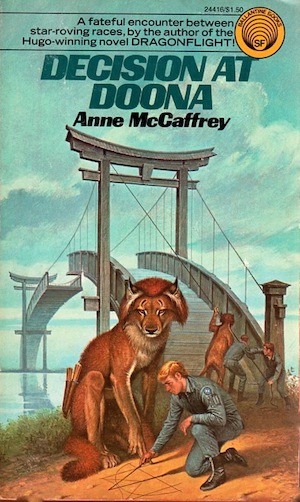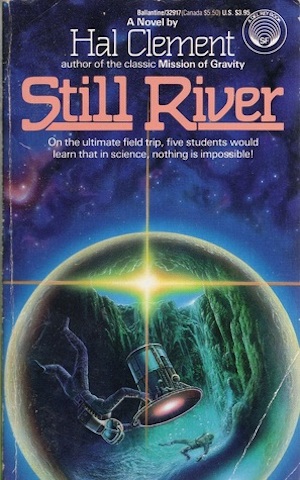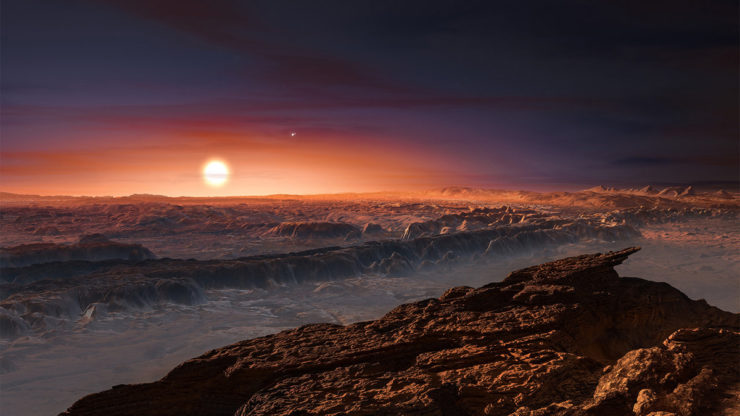Late in 2020—remember 2020? We had so much fun—astronomers reported radio signals from Proxima Centauri, which, as you know, is at present1 the closest star to the Sun2. This sort of thing cannot be due to aliens (of course)… but just suppose it were.
If the signal is from entities native to the Proximan system (which is now known to have at least two worlds, one of which is a terrestrial world in the liquid water zone) then either we got stupendously lucky or technological life is very, very common.3 If the aliens are not native to Proxima, then they got there somehow, which strongly suggests that:
A: they are much more technologically advanced than we are, and
B: they have possibly expanded through some/much/all of our galaxy.
The second possibility raises another question, which is: if some civilization has spread throughout our galaxy, why haven’t they visited us?
There are at least five plausible explanations.
Zoo Hypothesis

The aliens are aware of us but prefer for some reason to actively avoid overt contact. Possible reasons:
- In Anne McCaffrey’s Decision at Doona, a first contact gone horribly wrong has left an interstellar polity with an extreme reluctance to interact with other civilizations.
- Scientific detachment. Let’s see how these humans develop. No fair contaminating the experiment.
- Humans are icky.
- Nature preserve. There’s something interesting about the Solar System and it isn’t us.
Stagnation

Sure, the aliens have starflight but they are perfectly happy with the territory they have and see no reason to seek out the headaches of incorporating new worlds. Especially new worlds with potentially obstreperous natives. Example: Lindsay Ellis’ 2020 novel Axiom’s End. The aliens that the Americans have codenamed Pequod are quite aware of the Earth, but since Earth is mildly inconvenient to reach and offers nothing they want that they cannot acquire more easily at home, they’ve been content to ignore us. This is entirely to our benefit, as demonstrated by the very limited first contact that shapes the plot of the novel.4
Been Here, But…

The Earth is four and a half billion years old. Perhaps it does get visited from time to time, but at such intervals that the physical evidence has thus far been erased by geological processes. In Julian May’s Saga of Pliocene Exile, for example, the Tanu and the Firvulag aliens colonized Earth six million years in the past. All evidence of this alien sojourn had been erased by the present day, which meant that 21st-century human time travellers have a delightful surprise waiting for them at the other end of the one-way time gate to 6,000,000 BCE.
Other worlds in the Solar System lack Earth’s robust weather and geology, so perhaps the key to finding evidence of visitors is to check the more pristine bodies, like our Moon.
Overlooked for Good Reason

Perhaps the aliens’ body of experience suggests that the Solar System is unlikely to have worlds of interest. Many sources will suggest that the Sun is an unremarkable star. In fact, this not true at all. The Sun is much larger than the average star. Consequently, not only is its time on the main sequence much shorter than average but its luminosity varies dramatically over time—the Sun may be a third brighter than it was four and a half billion years ago.
This was the reason the Sun was ignored in Hal Clement’s Still River: nothing in the Galactics’ experience suggested there could be life, let alone intelligent life, on a world orbiting a rapidly brightening star, particularly on a world already so overheated that H20 was liquid.
Note that Proxima is small and dim, unlike our star, and that while one of its known worlds is within the liquid water zone, the other one is very much not.
Have Not… Yet

Perhaps we’ve simply been overlooked… thus far. In their paper A Simple Model of Grabby Aliens, Robin Hanson, Daniel Martin, Calvin McCarter, and Jonathan Paulson suggest that we are simply the beneficiaries of dumb luck. For all we know, the Milky Way is even now being carved up by a few inexorably expanding civilizations, but thanks to our location out here in the unfashionable boonies, they have yet to reach us. The operative word being “yet.”
Perhaps, as in Housuke Nojiri’s Usurper of the Sun, in which the Solar System is reshaped to suit enigmatic alien goals, we are due for a very rude awakening. It may be *very bad news* for us if those really are alien signals from the star right next door. In a few years, we may remember 2020 as a comparative golden age…
***
No doubt you have your own favourite explanations for our isolation, explanations I have overlooked. The comments section is below and awaits your submissions.
In the words of Wikipedia editor TexasAndroid, prolific book reviewer and perennial Darwin Award nominee James Davis Nicoll is of “questionable notability.” His work has appeared in Publishers Weekly and Romantic Times as well as on his own websites, James Nicoll Reviews and Young People Read Old SFF(where he is assisted by editor Karen Lofstrom and web person Adrienne L. Travis). He is a four-time finalist for the Best Fan Writer Hugo Award and is surprisingly flammable.
[1]STARS MOVE.
[2]Yes, technically the Sun is the closest star to the Sun.
[3]Also, that the challenging environment presented by a red dwarf like Proxima is no barrier to the appearance of complex life on one of its worlds.
[4]See also Game Designer Workshop’s “Traveller,” in which it turned out the only reason the Ziru Sirka AKA Grand Empire of Stars didn’t utterly crush Earth back in our Classical Period is because around the time the wheels were falling off the Western Roman Empire the Ziru Sirka solidified its borders just short of the Solar System. A pity for the Ziru Sirka, because not only was Earth peculiarly well suited to their form of life for reasons I won’t get into, the Terrans eventually developed indigenous star flight, which turned out very badly for the Grand Empire of Stars.











From the amount of people who claim to be abducted over and over again to be examined when humans aren’t that complex as physical beings, I’d say we are the pickled frogs for teenaged alien school science projects. Those that disappear rather than being returned are probably college-level dissections.
Maybe nobody has figured out interstellar travel at near light speed. Apparently, a speck of space dust at the right speed can derail your trip real quick.
I dunno, maybe we’re the first intelligent (for certain definitions of “intelligent”) species to arise? Someone has to be first.
3: that’s reasonable but wouldn’t explain artificial radio signals from Proxima.
Actually, thought of a sixth reason: the standard method of getting around requires a receiver at the destination, and until we can build one, nobody is coming to visit.
For a similar thought to number three, see the Silurian Hypothesis, which explores what detectable traces a modern humanish tech level civilization might have left that would be detectable over a geologically significant period of time. Of course that’s not necessarily the same as the traces that might be left by an extraterrestial species arriving and colonizing the place.
Hmm. I wonder what sort of evidence one would look for to determine if one’s planet had been the subject of intensive artificial terraforming (or, if you like, xenoforming) efforts…
@@.-@
I vaguely recall reading a story where the Important Radio Signals From Space were actually reflected (somehow) signals from Earth.
0:
In those books a surprising amount of evidence that this sojourn occurred still exists in the present (as the very recognizable names Tanu and Firvulag might suggest) – it’s just not been interpreted as evidence of alien colonization.
(this series also uses the Zoo hypothesis – by the present day, the very few alien races in the Galaxy are part of a single political organization that enforces its no-meddling rules firmly)
I think the 2nd footnote went a bit wonky. If the text had been “closest to the Earth” and the footnote said “the Sun is the closest star to the Earth,” then it would make sense, but it looks like someone changed “Earth” to “Sun” in the text and in the footnote and now it doesn’t make sense. “Yes, technically the Sun is the closest star to the Sun” just doesn’t make sense.
Also, I think the reason that we haven’t been visited by aliens yet was explained by The Hitchhiker’s Guide to the Galaxy: Space is big. Really big.
Very weird to see that post-Galactic Milieu Trilogy cover for _The Many-Colo(u)red Land_, btw. But sticking with the Julian May theme, _Intervention_ contains several scenes of the aliens coming to visit incognito and try to figure out whether those humans will ever be ready for interspecies contact, or indeed if they will even survive that long. (And I don’t think it’s spoiling too much to note that the climax of that novel is when some of the humans call for help and the aliens, who have been waiting for this moment, suddenly appear. In 2012.)